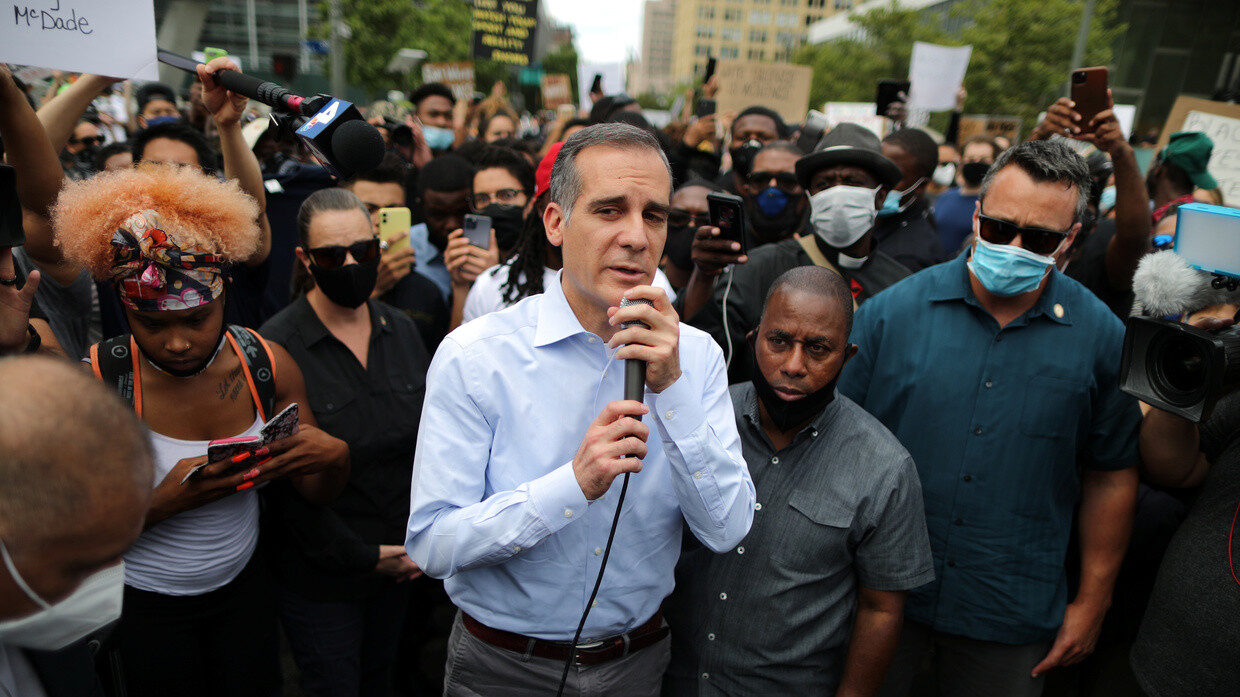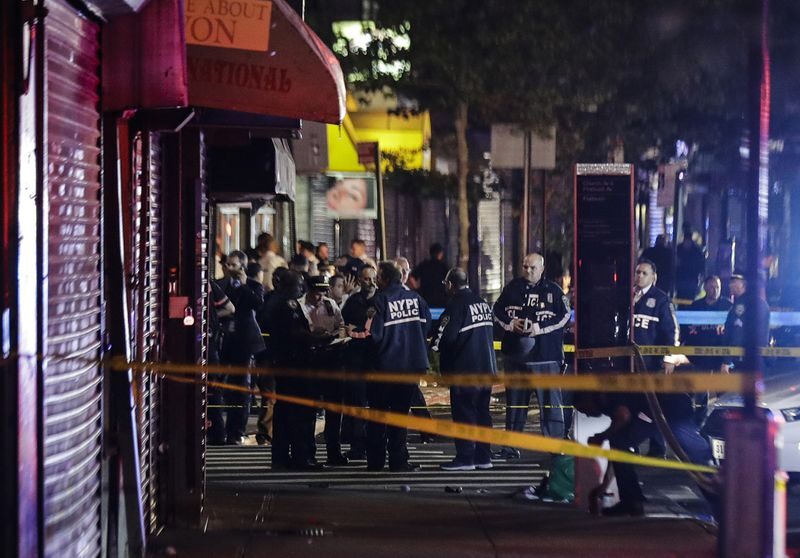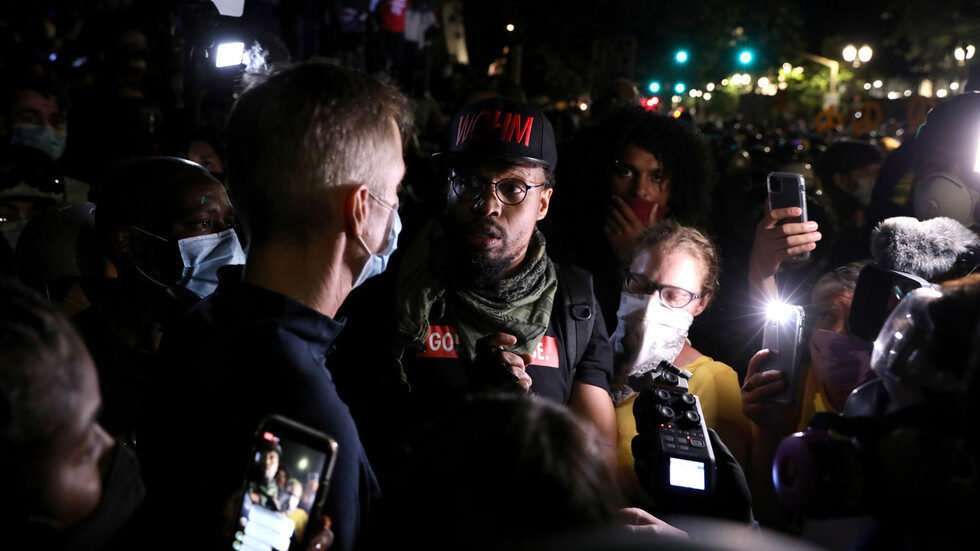A review of police data and public reporting found that in the first three months of 2021, the homicide rate in 20 major cities across the country rose by 28% from the same period last year.
In nine of the cities that made the most dramatic cuts to police department budgets, homicides rose by nearly 68%. Some of those cities are now backtracking, seeking ways to boost departments' coffers.
Portland, Oregon's, homicide rate soared a staggering 1,900% in 2021, with 20 killings, compared with one during the first three months of 2020. The city carved $16 million, or 7%, out of its police budget last year.
Austin, Texas, cut $20 million, or 23%, from its department budget and shifted another $80 million by moving certain services to other departments. Police have reported 19 homicides this year, compared with 14 during the same period last year — a 35% rise.
Philadelphia reduced police funding by 5%, or $33 million, and saw homicides climb 25% to 120 in early 2021 from 96 during the same period last year.
In Minneapolis, there have been 19 homicides this year, a 46% jump from the 13 in the first quarter of 2020. The city council has shrunk its department's budget by more than $9 million, or 5%.
The smaller budgets have forced departments to lay off officers, abandon units, cut training and scale back hiring goals. Law enforcement officials and some analysts say there is a link between defunding police departments and rising crime rates.
"The cuts in budgets — whether it is because of the pandemic or defunding the police — is leading to a reduction in policing taking place. There is more of an opportunity for crime because there is less deterrence," said Jerry Ratcliffe, who teaches criminal justice at Temple University in Philadelphia.
As part of its budget cuts, Portland last year disbanded its Gun Violence Reduction Team, which investigated firearm crimes. Community activists had pushed for dismantling the unit, saying it disproportionately targeted people of color.
Since the cuts and elimination of the gun-violence unit in July, Portland recorded 66 homicides, compared with 17 between July 2019 and April 2020.
Portland Mayor Ted Wheeler last month backtracked somewhat on defunding the police, asking the city's commissioners for $2 million in one-time funding to increase proactive policing. Some of the funds would bolster a six-officer team that responds to shootings around the clock.
"When you give up on the idea that the police are going to hold people accountable, it is not surprising that there will be more violence," said Randy Petersen, a former police officer and senior researcher for the Center for Effective Justice at the Texas Public Policy Foundation.
The Los Angeles City Council in July voted to slash $150 million, or 2%, from the police budget. In November, voters approved a measure to devote 10% of the city's budget to nonpolice public safety measures.

In the first three months of 2021, the city saw 77 homicides, up from 60 during the same period in 2020, a 28% uptick.
New York's City Council last year slashed $1 billion, or 2%, from the police budget, allocating more than half of the money to other agencies such as the Department of Education and the Department of Homeless Services.
A casualty of the cuts was a 600-officer plainclothes anti-crime unit, which responded to violent crimes. This year, New York has recorded 84 homicides, up 13% from 74 during the first three months of 2020.
"That unit was the tip of the spear in dealing with violent crime," Mr. Petersen said. "I think it is silly to expect anything less than an increase in violent crime if you eliminate that unit."
While most big cities' cuts account for only a small percentage of the police budget, the reductions still affect the number of officers out on the street.
In Los Angeles, for example, the decrease will force the department to reduce its number of officers to 9,757 by next summer from 9,998 last summer. Department officials also said they will have to abandon the goal of reaching 10,000 officers within a few years.
The Austin City Council tied its budget cuts to the elimination of 100 officer positions, among other cuts.
"Defunding is not taking place in huge levels, but pedestrian and traffic stops are down significantly" Mr. Ratcliffe said. "There are more opportunities for crime because there is less deterrence."
Some say the rise in homicide rates is not tied to the budget cuts, but rather to the social and economic upheaval caused by the coronavirus pandemic.
"COVID-19 created lockdowns, which created stress, anxiety, people out of work, and people at their wit's end," said Alex Piquero, a criminologist at the University of Miami. "At the same time, gun sales increased and the drug trade didn't stop. All of those things happening at once are a constellation of factors creating a perfect storm."
But Mr. Ratcliffe dismissed COVID-19 as the reason for soaring homicide rates.
"I think you hear criminologists blame the pandemic because there is not a willingness to acknowledge by those who pushed to defund the police that the police do have a crime prevention role," he said.
Mr. Ratcliffe noted that several European countries, which have been ravaged by the pandemic, have reported drops in violent crime.
Italy, France, Germany and the United Kingdom have all recorded lower homicide rates than the U.S. this year, according to data from the United Nations' Office on Drugs and Crime.
Analysts say chopping police department budgets has led to a reduction in so-called proactive policing, an effort by officers to seek out and prevent crime before it happens.
Strategies such as "broken-windows policing," "stop and frisk" and "zero tolerance" are all forms of proactive policing. The policies were widely credited in the late 1990s and early 2000s for reducing crime.
But since the deaths of Michael Brown and Freddie Gray, two Black men who died in the police custody, critics have slammed those strategies as forms of racial profiling.
Other critics have said that proactive policing doesn't work and have pushed to eliminate it as part of the calls to change policing in the wake of George Floyd's death in Minneapolis last year.
Budget cuts have left fewer officers available for proactive policing in some cities. In other cities, police have scaled it back, fearing a contentious arrest could become the next viral video.
"Just by removing officers from the streets, police can't go out and look for crime," Mr. Petersen said. "The less proactive policing we see done, the more we can expect an increase in crime."
He said he expects the homicide rate will continue to rise until cities add more officers to carry out proactive policing.
"If we continue down this path, we will continue to struggle," he said. "Defunding has resulted in fewer, less capable, less trained police officers. I don't know if we can continue in this kind of environment. We need to abandon this path of defunding the police."





R.C.